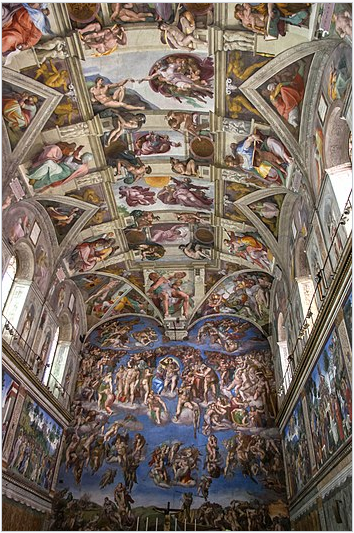Official 37 - lecture 3
Listen to part of a lecture in an art history class.
I'm sure you've all heard of the Mona Lisa, the famous painting by Leonardo da Vinci.
The Mona Lisa is a portrait of a woman, and it's thought to be the portrait of Lisa Gherardini but that's not certain.
In fact, many things about the Mona Lisa remain a mystery.
For example, we don't know exactly who commissioned the painting or how long da Vinci worked on it.
And there are actually many scholars who think the mystery makes the painting more interesting; I think it places unfortunate limits on our analyses... makes it hard to make strong arguments about the painting.
it place limits on our analyses.
Anyway--getting to the point--most people today might've never heard of the Mona Lisa--or of many other now-famous works of art for that matter--if it hadn't been for Giorgio Vasari.
Giorgio Vasari was an Italian painter, architect and scholar.
In the mid-1500s, he wrote a book called Lives of the Most Eminent Painters, Sculptors, and Architects, in which he describes--among many other things--the features of the Mona Lisa, including her famous smile.
This book drew a lot of attention to da Vinci and significantly increased the Mona Lisa's fame.
As the title suggests, Lives of the Most Eminent Painters, Sculptors, and Architects includes biographies not only of da Vinci, but also of many other now-famous Italian Renaissance artists.
This was the first time that a European author had made the personal lives of the artists a central component of an art history book, and many a later author followed the example...
The more important the artist--in Vasari's view--the longer their biography in the book,
and by far the longest of the biographies is that of Michelangelo--the painter of the Sistine Chapel ceiling and sculptor of the famous statue of David--whose work Vasari adopted as, uh... his benchmark... his reference point for evaluating everyone else's artwork.
biography is written by biographer
sculptor makes statue of David
Sistine Chapel ceiling
Many of the biographies are extremely detailed, with all the basic facts about where the artists were born, where they'd worked, who their teachers were, and so on...
But I read Vasari's book cover-to-cover almost every summer--
I find it a great way to unwind during the summer break--and what keeps me coming back to it are the anecdotes--fascinating anecdotes that give you glimpses into the artists' private lives--their dreams, their fears, their virtues, their vices...
anecdotes, story, tale, yarn
In his book Vasari also tackled--quite successfully, I might add--the enormous task of sorting out which works had been done by which artists, which works belonged in the same stylistic categories, which works belonged in similar categories in terms of quality, and so on--stuff you'd take for granted today,
you'd take for granted 认为是理所当然
but again, Vasari was the first European author to do that.
A word of caution, though: Vasari was not at all averse to--how should I put it?--modifying the facts.
averse: having an active feeling of repugnance, dislike, or distaste.
allergic, antipathetic
be averse to modifying the facts
For example, in his book he has a touching description of da Vinci's death, in which da Vinci dies in the arms of his last patron, the king of France, Francis I.
Now, da Vinci did spend the last years of his life working in the court of Francis I.
Vasari seems to have overlooked a minor detail, however--the well-documented fact that the king was far away when da Vinci breathed his last breath.
But why let the facts stand in the way of a great story, right?
Since Vasari's tales are, as I've said, so compelling, and because they've been repeated by so many subsequent authors, they're still often taken at face value, even today, no questions asked.
